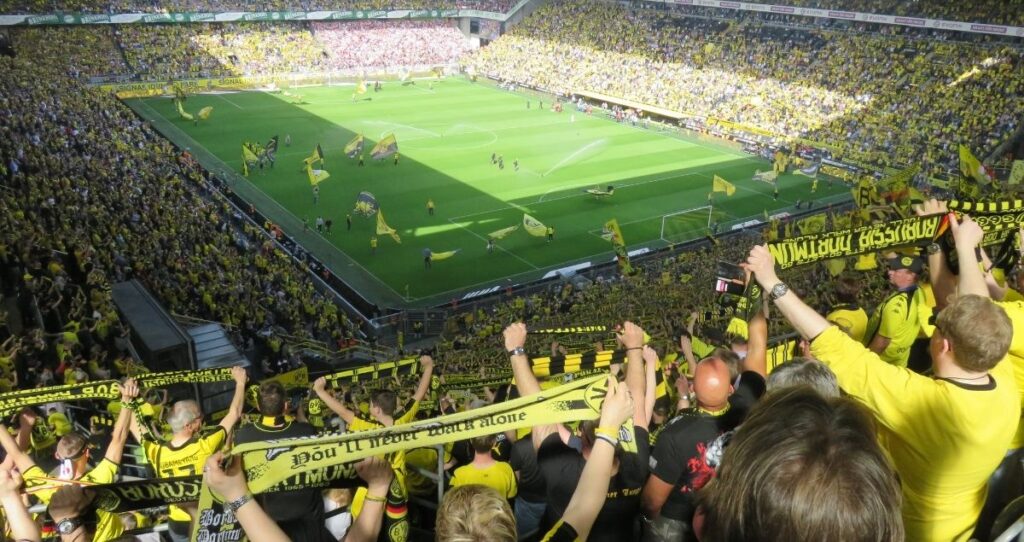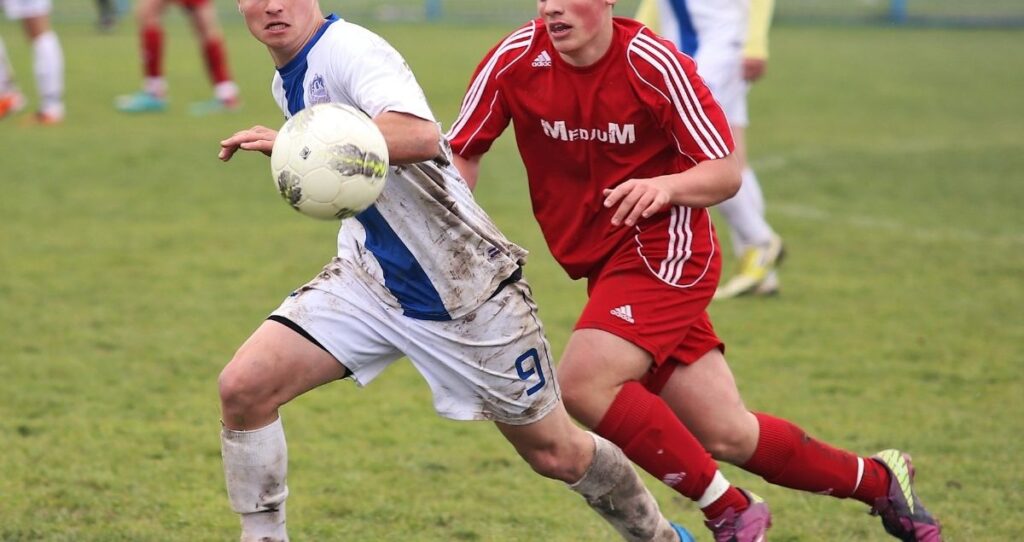Boost your betting experience and get up to $200 bonus right now!
The Champions League final is always a cauldron of emotions, tactics, and raw talent. In 2024, the clash between Real Madrid and Borussia Dortmund was a vivid reminder that on football’s grandest stage, experience often battles youthful fervor, while tactical genius can overturn the bleakest moments. Real Madrid’s 15th European triumph didn’t come easy—they faced a Borussia Dortmund side hungry to etch their name back into UEFA folklore after nearly three decades. Yet, this final wasn’t just about glory; it was a chess match, a tactical duel where formations and substitutions moved the needle in crucial moments. The game began with Borussia Dortmund seizing the momentum, pressing high and displaying fluidity that left many breathless, but Carlo Ancelotti’s halftime changes carved a path to victory. To unpack these chess moves, it’s essential to dissect the formations, player roles, and in-game adjustments that made this match a tactical masterpiece worthy of deep dive analysis.
Behind the scenes, the battle wasn’t only on the pitch but also in the details — from Adidas cleats slicing through the turf to the sleek Nike kits bearing down the wings, the Champions League Final became a showcase of modern football’s fusion of sport science, fashion, and grit. The brands worn by players, whether Puma, New Balance, or Under Armour, represent more than sponsorship; they’re part of the player’s identity and performance, subtly shaping outcomes in this high-stakes theater.
For fans hungry to relive the drama and dissect the moments that turned the tide, this tactical breakdown offers a layered look at how Real Madrid’s adaptability outsmarted Dortmund’s fervor and why the 4-3-1-2 arrangement flipped the script after the break. From defensive resilience to midfield battles and clinical finishing, the final boiled down to acute tactical intelligence and poise under pressure.

Real Madrid’s Tactical Evolution in the 2024 Champions League Final
Real Madrid’s journey to their 15th European crown was a lesson in tactical patience and adaptability. Under Carlo Ancelotti’s steady command, the team showcased a tactical flexibility that enabled them to respond to Borussia Dortmund’s aggressive 4-1-4-1 setup. Starting with a 4-3-1-2 formation, Madrid initially struggled to impose their usual dominance as Dortmund’s midfield press disrupted passing lanes and rushed transitions.
The first half exposed Real’s vulnerability in space. Borussia Dortmund capitalized by pushing wide players like Julian Brandt and Marcel Sabitzer to stretch Real’s backline, forcing goalkeeper Thibaut Courtois into high-pressure saves. The balance in midfield, pivotal in dictating tempo, tilted towards Dortmund’s Emre Can, whose robust shielding and ball distribution underpinned most of their offensive impetus.
But it was the tactical shift at halftime that painted the real victory canvas. Ancelotti’s decision to tweak Madrid’s midfield not only shored up defensive coverage but unleashed a more dynamic attack. The injection of a more disciplined holding midfielder alongside Luka Modric and Toni Kroos reconfigured the game’s rhythm, allowing Federico Valverde greater freedom to surge forward. Vinícius Júnior’s movement grew sharper, exploiting the spaces vacated by a fading Dortmund midfield.
Key elements of this tactical pivot included:
- Midfield Reinforcement: Adding a dedicated defensive midfielder to break up Dortmund’s attacks and recycle possession effectively.
- Positional Fluidity: Players like Valverde swapped roles between midfield and attack to destabilize Dortmund’s marking.
- Press Reduction: Madrid allowed Dortmund an initial territorial advantage, betting on sharper counter-pressing and structured recovery later in the match.
| Aspect | First Half | Second Half |
|---|---|---|
| Formation | 4-3-1-2 | More midfield compactness, subtle shift in player roles |
| Possession | Dortmund: 54% | Madrid: 57% |
| Shots on Target | Dortmund: 5 | Madrid: 7 |
| Successful Presses | Dortmund: 68% | Madrid: 75% |
| Goal Scorers | 0 | 3 (Madrid) |
Adidas-clad midfielders meticulously ran patterns to carve openings, while the presence of Nike-supported forwards showcased the blend of skill and speed needed to break Dortmund’s defensive lines. This layered approach exemplified why Real Madrid is still the club to beat on the continental stage, blending veteran cunning with tactical innovation.
Borussia Dortmund’s Aggressive 4-1-4-1 Press and Its Initial Impact
Borussia Dortmund approached the 2024 final with an energetic 4-1-4-1 system designed to disrupt and dominate. Edin Terzić’s youthful squad relied heavily on pressing intensity and pace, aiming to unsettle Madrid early. Gregor Kobel marshaled a sturdy defensive line with Julian Ryerson and Ian Maatsen consistently bombarding down the flanks.
The sole holding midfielder, Emre Can, functioned as a midfield screen and deep-lying playmaker, orchestrating pressing triggers and quick breaks. Dortmund’s wide midfielders, Brandt and Sabitzer, aggressively pressed Madrid’s central midfielders, disrupting buildup phases and forcing turnovers.
In the early stages, this approach paid dividends. Dortmund:
- Maintained control over the midfield battles by vigorous pressing and quick recoveries.
- Exploited the wide areas to deliver swings of the ball into the penalty zone.
- Forced Real Madrid to play longer balls and take risks in buildup.
| Player | Role | Key Contributions |
|---|---|---|
| Emre Can | Holding Midfielder & Captain | Shielded defense, initiated counterattacks |
| Julian Brandt | Left Central Midfield | Creative passing, pressing triggers |
| Marcel Sabitzer | Right Central Midfield | Wide runs, overlapped line breaks |
| Youssoufa Moukoko | Striker | Pressed defenders, hold-up play |
Under Armour boots gave Dortmund’s wingers the traction to accelerate sharply, a vital attribute when engaging Madrid’s pressing triggers. However, frustration mounted when key chances were spurned, which forced Terzić to reconsider opening gambits as the match progressed. This intense start was a textbook showcase of aggressive high-pressing football—brutal, fast, and relentless—yet eventually wearied as Madrid adapted.
Key Player Matchups That Shifted the Final
Football boils down to battles on the field, a series of man-to-man chess matches that define the flow of the game. The 2024 final was no exception, where key individual confrontations shaped the tempo and eventual outcome. Here’s a breakdown of standout duels:
- Luka Modric vs. Emre Can: Modric’s experience and vision clashed with Can’s physicality and tenacity. As the game progressed, Modric’s ability to retain possession and orchestrate attacks quelled Dortmund’s early dominance.
- Vinícius Júnior vs. Mats Hummels: Speed and spontaneity against seasoned defensive composure marked this contest. Vinícius’ pace repeatedly unhinged the Dortmund backline.
- Toni Kroos vs. Julian Brandt: A cerebral midfield duel where Kroos’ accurate passing networks outpaced Brandt’s disruptive pressing over time.
| Player | Battle | Impact Outcome |
|---|---|---|
| Luka Modric | Midfield Control vs. Emre Can | Enabled Real’s tempo control post-halftime |
| Vinícius Júnior | Direct Attacking vs. Mats Hummels | Created multiple goal-scoring chances |
| Toni Kroos | Passing vs. Julian Brandt | Opened space and slowed Dortmund’s press |
Footwear plays a subtle yet crucial role here too—with Puma and Kappa favored by defensive players for comfort and control, while Reebok and Mizuno options helped attackers find that extra surge of agility. These duels weren’t mere skirmishes but war zones where the psychological edge shifted multiple tides.

Strategic Substitutions and In-Game Adjustments Deciding the Final
One hallmark of elite coaching is the ability to tweak tactics on the fly, and Ancelotti’s halftime substitutions in 2024’s final perfectly embodied this. Bringing on fresh legs and changing roles shifted Real Madrid’s balance from fragile to formidable.
The addition of a resilient holding midfielder plugged gaps vulnerable in the first half. More aggressive wing play with pressing triggers realigned pressure on Dortmund’s defenders. Substitutes came in not merely to replace but to unlock new dimensions in Madrid’s attack and defense.
- Halftime Substitution: Introducing a dedicated defensive midfielder to shield the backline and redistribute possession under pressure.
- Late-Game Offensive Switch: A forward swap injecting fresh pace, forcing Dortmund’s tired defenders into mistakes.
- Positional Tweaks: Shifting midfield roles to exploit Dortmund’s pressing gaps and maximize ball retention.
| Substitute | Minute Entered | Effect |
|---|---|---|
| Casemiro (Defensive Midfielder) | 46′ | Stabilized midfield, broke up counterattacks |
| Rodrygo (Forward) | 70′ | Increased wing penetration and pace |
| Eduardo Camavinga (Midfielder) | 80′ | Added energy to midfield pressing |
Such tactical decisions are crystallized in expert reports on tactics analysis platforms. Understanding how these on-the-fly decisions affect the end score isn’t just a premium skill for professionals—it’s what enthralls fans worldwide and amplifies match-day drama.
The Role of Fan Culture and Stadium Atmosphere in Tactical Outcomes
Underpinning the technical and tactical is the intangible power of the crowd. The 2024 final saw tens of thousands pack the stadium, creating an electric atmosphere that swayed momentum, fueled bursts of energy, and pressured players into making decisive actions.
Fan culture in football transcends mere cheering—it’s an ecosystem of rituals, chants, and collective emotion that can elevate or crush spirits. Real Madrid’s loyal fans, decked out in Nike and Adidas fanwear, brought a vocal presence that buoyed the team’s morale, especially as the match tilted after halftime.
The contrasting Dortmund supporters, deeply passionate and young, embodied the vibrant energy of the team’s youth and ambition. Their chants, synchronized waves, and use of pyrotechnics briefly intensified the pressure on Madrid’s players, adding another tactical layer coaches must factor in.
- Psychological Edge: Loud home support can force hesitation or premature decision-making.
- Momentum Shifts: Waves of applause and chants often correspond to tactical shifts on the field.
- Visual Identity: Fan colors and kit brands like Umbro and Asics give iconic visuals that resonate with player pride and identity.
| Factor | Impact on Play |
|---|---|
| Fan Noise Levels | Raised hearts and pressured opposition communication |
| Visual Impact | Boosted player morale and identity expression |
| Emotional Waves | Influenced player focus and urgency during key moments |
Matchday at sites like the stadium experiences platforms captures this symbiosis perfectly. For managers and players, tapping into this energy can be the intangible difference between success and heartbreak.
Frequently Asked Questions about Champions League Final Tactics
- What is the significance of formations like 4-3-1-2 and 4-1-4-1 in a final?
These formations define how teams balance defense and attack. A 4-3-1-2 offers midfield control and attacking support through the ‘1’ behind the strikers, whereas 4-1-4-1 emphasizes midfield shielding and wide play to control tempo and press aggressively.
- How do halftime tactical changes influence the outcome?
They allow teams to respond to observed weaknesses, reposition players for advantage, and inject fresh energy, often changing momentum, as witnessed in Real Madrid’s 2024 final triumph.
- Why are individual matchups crucial in football tactics?
Because football is essentially a series of one-on-one battles, winning these can control possession, create chances, and disrupt the opposition’s strategy.
- What role does fan culture play in tactical match preparations?
Fans create an emotional environment that can either intimidate or inspire; coaches prepare players to use this energy positively amidst the pressure.
- Do apparel brands affect player performance?
While subtle, the choice of brands like Nike, Puma, and Adidas affects comfort, traction, and confidence, contributing marginally but notably in elite performance settings.
Join today and grab up to $200 bonus for your next bets!
Content assisted by AI. This article was created in whole or in part with the help of artificial intelligence.